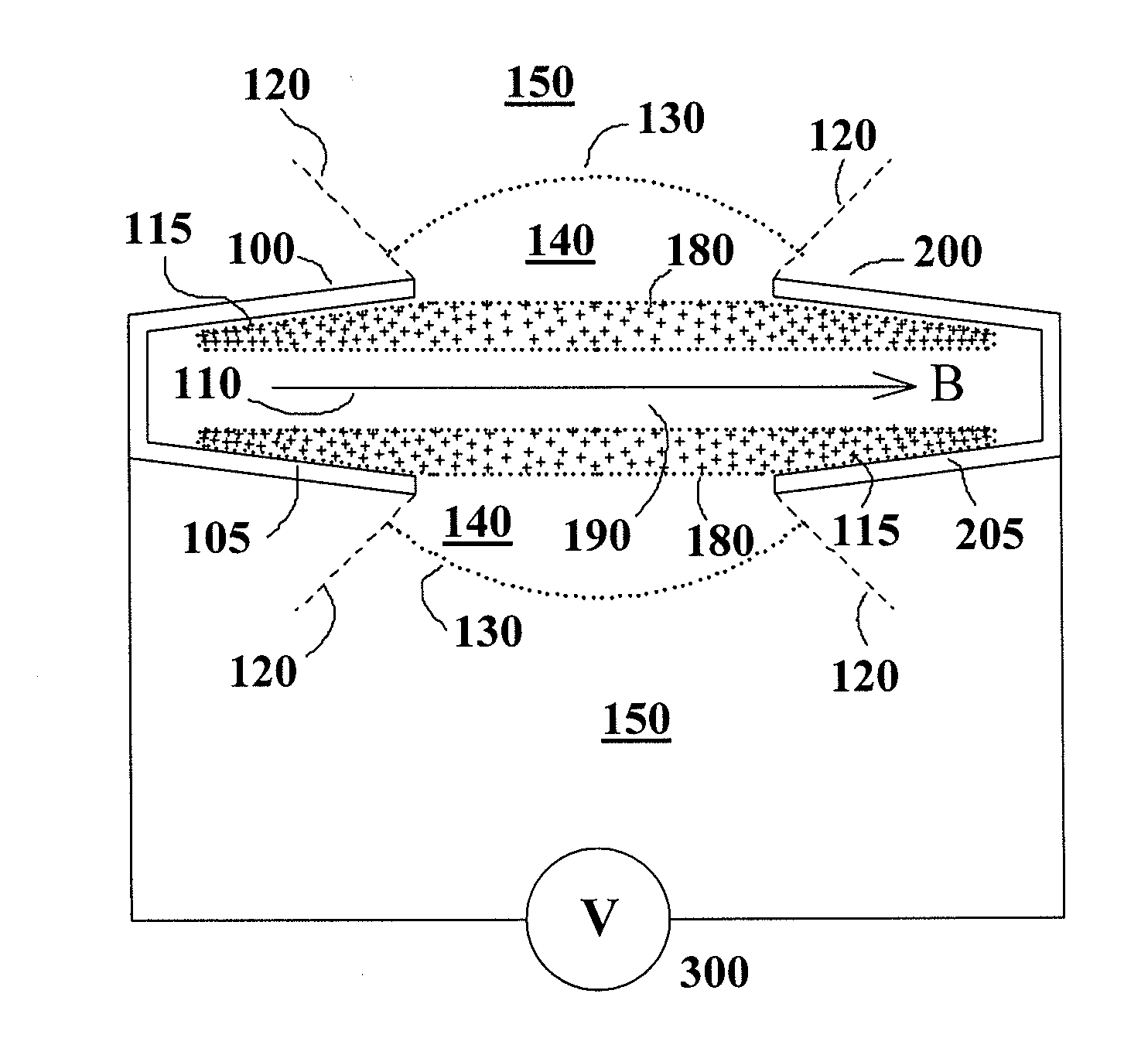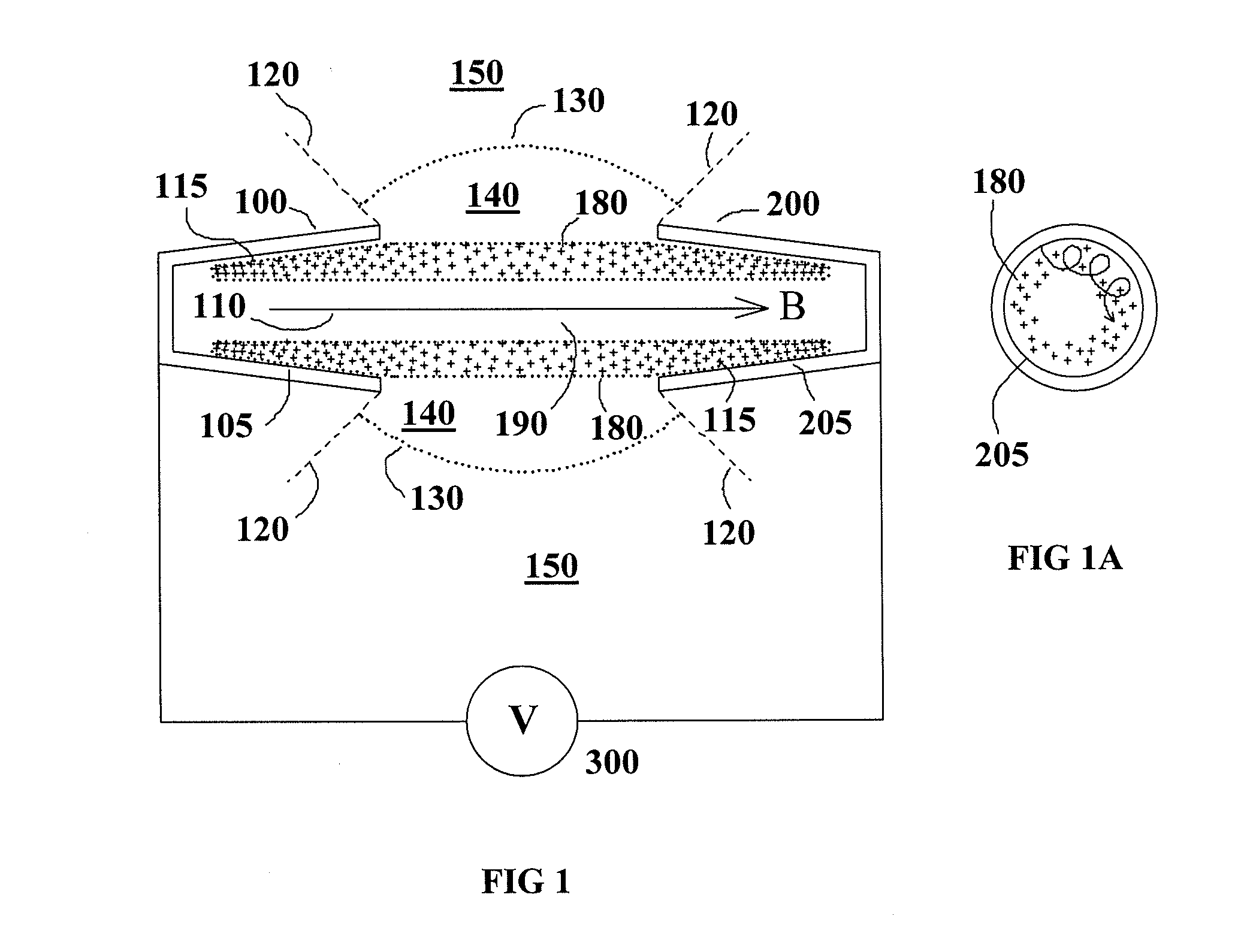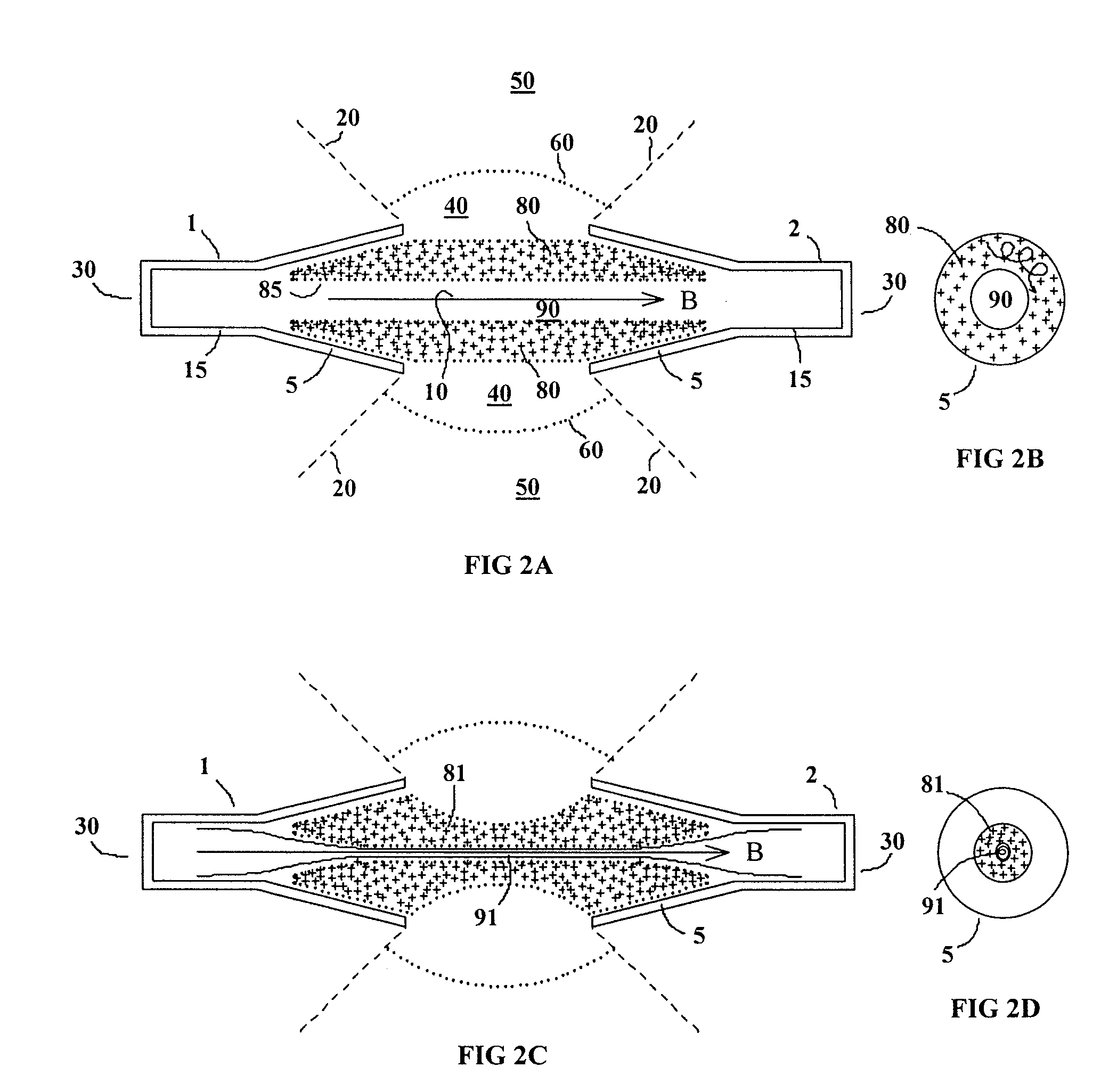Z-pinch plasma generator and plasma target
a plasma generator and plasma target technology, applied in plasma technique, electric discharge tubes, light sources, etc., can solve problems such as inability to achieve dielectric barriers
- Summary
- Abstract
- Description
- Claims
- Application Information
AI Technical Summary
Benefits of technology
Problems solved by technology
Method used
Image
Examples
first embodiment
[0021]The operation of the invention is described with reference to FIG. 1, which shows a cross section of a two-electrode configuration with cylindrical symmetry about axis of rotation 110. Electrodes 100 and 200 are identical and opposed to each other. The outer envelope of each electrode, illustrated in cross section by broken lines 120 may be conical in shape. The interior of the electrode configuration within boundary 130 is filled with a low pressure working gas 140. When working gas 140 is a condensible metal vapor such as lithium, a buffer gas region 150 is used to contain and recycle the metal vapor according to the wide angle heat pipe principle (McGeoch, U.S. Pat. No. 7,479,646 (2009)). The heat pipe surfaces necessary for the reflux of liquid metal are not shown in FIG. 1, as they are not part of the present invention. A uniform magnetic field B is present parallel to the axis of symmetry 110 of the electrodes.
[0022]Alternating electric pulses are applied via voltage gen...
second embodiment
[0023]the invention that is able to generate a dense, cool, cylindrical plasma core is illustrated in FIGS. 2A-2D. Two identical opposed hollow electrodes 1, 2 have rotational symmetry about axis 10. The hollow interior of each electrode is composed of an outer flared portion 5, which may be conical, and an inner straight portion 15 which is cylindrical. The outer envelope of each electrode, illustrated in cross section by broken lines 20 in FIGS. 2A and 2C, may be conical in shape. The hollow electrodes 1, 2 have closures 30 at the outermost extent of cylindrical sections 15. A working gas 40, which may be lithium vapor, fills each hollow electrode and the region between them. If the working gas is a condensible metal such as lithium, there is a helium buffer region 50 surrounding it. The boundary 60 between the lithium working gas and the helium buffer is established by the disposition of a wide-angle heat pipe structure of the type described in U.S. Pat. No. 7,479,646 (McGeoch, 2...
PUM
 Login to View More
Login to View More Abstract
Description
Claims
Application Information
 Login to View More
Login to View More - R&D
- Intellectual Property
- Life Sciences
- Materials
- Tech Scout
- Unparalleled Data Quality
- Higher Quality Content
- 60% Fewer Hallucinations
Browse by: Latest US Patents, China's latest patents, Technical Efficacy Thesaurus, Application Domain, Technology Topic, Popular Technical Reports.
© 2025 PatSnap. All rights reserved.Legal|Privacy policy|Modern Slavery Act Transparency Statement|Sitemap|About US| Contact US: help@patsnap.com



